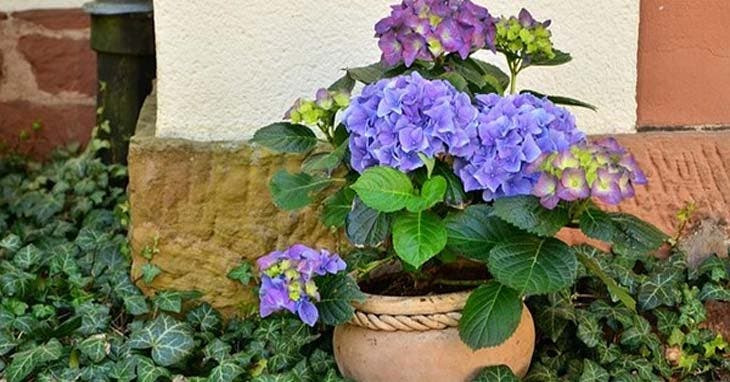Hydrangea, also called hydrangea, is an ornamental plant that can also be grown indoors. To make this beautiful plant flourish, discover the secrets to growing and flowering this plant outdoors. Did you know that this flower had a special meaning? One thing is certain: you will understand the message of those who offer it to you now!
Meaning of Hydrangea in the language of flowers

Each flower symbolizes a specific message, and when you have to decide to give one as a gift, it is good to know which one is most suitable for the occasion. In the language of flowers, hydrangea represents the birth of a new love or the return of a partner from the past. It is also worth noting that the meaning of hydrangea also changes depending on the color you choose.
White, for example, represents the birth of sincere love. Offering a white hydrangea is telling the other person that we are thinking deeply about them. To convey a message of deep love, despite the capricious character of your loved one, you should choose the color blue. If you want to express your loyalty and invite the other to enjoy the joys of love, it is good to opt for a bouquet of pink hydrangeas.
Read also: Water tomatoes with this – the plants will become strong and fertile
Here’s what happens when a hydrangea grows in your home
growing hydrangea

Cultivation of hydrangeas is simple because it does not require special care. Watering must be regular and abundant, especially in summer. In case you want to see good growth and abundant flowering, it is advisable to cut the dry branches in the period from February to March. By applying these gestures, the hydrangea will become a fertile plant whose flowering occurs in spring.
To care for hydrangea it is important that the soil is made up of a quarter of garden soil, a quarter of sand, a quarter of earth and the remaining quarter of wood. Remember that this plant prefers moderate exposure to the sun, for this reason it is advisable to choose a place with a moderate amount of sunlight, protected by a wall and possibly oriented to the North-West.
The only precaution to preserve the plant concerns low temperatures. Winter, in fact, can be fatal for hydrangea which can wither with the arrival of low temperatures. For this reason it is advisable to protect it during the colder months with straw and fabric.
Hydrangea flower colors

As mentioned above, xdi iron hydrangeas that serve as a preventative treatment that can green the leaves. The various colors depend on the composition of the soil. The pH of the soil and the quantity of aluminum present in it are fundamental elements in defining its nuances. Thus, the shades of blue, light blue and purple correspond to an acidic soil, while with a neutral pH there is rather the growth of flowers with pink and red pigments.
For white hydrangeas, however, the situation is different, since their color is not linked to the pH of the soil and they simply maintain or change color depending on the light. With little light they can turn greener, while with a little sun they can turn red or pink.
Fertilize hydrangeas
The best time to fertilize hydrangeas is in autumn. Only, it is good to keep in mind that around February/March, you will have to use a slow release fertilizer to ensure good flowering. It is also good to take into consideration the possible iron deficiency of these flowers and use iron chelates which act as a preventive treatment that can green the leaves.
Prune hydrangeas

Pruning hydrangeas is essential to ensure good flowering. It should also be borne in mind that hydrangeas always bloom on the previous year’s branch. For this reason, a badly cut branch could compromise good flowering.
Read also: Don’t throw away this part of the banana, it’s worth its weight in gold, use it in these very useful ways
Don’t forget that these flowers should not be touched, so you will have to wait for them to dry, harvesting them only around February-March. For pruning it is also a good idea not to go below the buds and start from the base of the flower.
The size of the branches, however, depends on the age of the plant. If you have a very old hydrangea, the branches will need to be removed from the base to about a third of the height, so that the cut exposes the inside of the bush. To ensure correct pruning, it is recommended that shears are sharp and clean to avoid possible infections.







